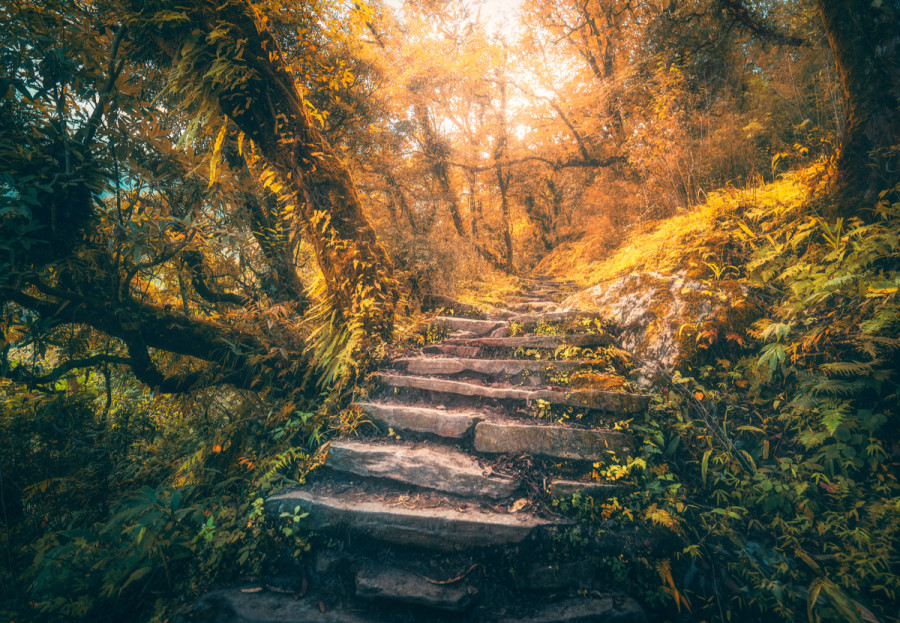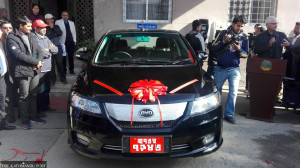Columns
The soft places between dreams and reality
The old trails used by travellers, such as the Hippie trail or the Silk Road, existed when people were not burdened by hard borders and restrictive state presence.
Abhi Subedi
Several years after I presented a paper at a seminar on the nature of the dream trails ending in Kathmandu and their social and futuristic ends, I had to speak on the same subject in a different context and setting, which was informal and relaxed. This time, it was not a crowded seminar room but a quiet corner of Himalayan Java Coffee House in Thamel that was like a watering hole for me. I visited Java quite regularly until the day before the pandemic induced lockdown. A young talented American journalist came there looking for me one afternoon. He said he wanted to ask me what I knew about the operational systems of the hippies and their modus vivendi during their free visits to Kathmandu that lasted roughly from 1965 to 1972. I soon discovered that he was not so interested in the nature of the hippie trails and its metamorphosis from the last quarter of the 20th century as he was in its historicity, including politics.
The journalist sans borders had some ideas about the relationship between the marijuana smoking, the LSD trips and politics. A few points he made struck me. He says in his short video conversations and reporting that can be accessed online, titled ‘How the Drug War Destroyed a Hippie Paradise in Kathmandu’, that there was a direct link between the destruction of the marijuana plants in the remote districts of Nepal and the rise of Maoist guerrillas. Some of his observations have metaphorical significance. He uses the metaphor of scaling the heights as the essence of tourism in Nepal, which includes mountain trekking, getting high, mountaineering, and tripping on heroin (which also takes you to the heights). He refers to the banning of marijuana as part of the Nixon administration's attempt to nip communism in the bud; though it does not have a direct correspondence, it touches on the American administration's failure to understand the native contexts of habits and rural economies. That the last Shangri-La was destroyed with these manoeuvres is easy to see, but what is difficult to understand is the relation of the Maoist flow that this destruction of Shangri-La triggered. It demands a separate, careful treatment. His argument is that after marijuana farming was targeted, ordinary people lost the means of their livelihood; they subsequently joined the revolution. This is a subject of open discussion.
The journey as much as the destination
One very important feature of the overland trails is their historicity and the dreams of fulfilment that they evoked. The ancient Silk Road was the combination of trade and utopia. The travellers were guided by their trading plans, the age-old experiences and the physical assessment of such travels. But there were others too who used such trails. They were dreamers, religious groups, seekers of mukti (salvation), explorers, poets and freaks whose stories are recorded in books and paintings. Those who were stuck or those who could not make any significant progress in their quest had different stories to tell. Shangri-La evokes travel. You reach such space after a fair degree of travel. The place will be exotic, somewhat political and fantastic. And those who are stuck in such space may be called the 'prisoners of Shangri-La' (borrowed from Donald Lopez’s 1998 book of the same name). But those dreamers who came looking for the lost dream space found a ‘surrogate Shangri-La’ in Nepal, ‘a comparable role as a sanctuary of comprehensive knowledge, a place for New Age wanderers in search of an elusive but hegemonic construction of knowledge’ (Thomas Richards, The Imperial Archive, 1993).
The majority of the hippies whom I met had a clear picture of the physical trail that they had covered to arrive in Kathmandu and to end up in Jhochen, Swoyambhu and some other places. But what surprises me most is the fast pace with which the whole concept of the trail changed in the course of 40 or so years. The overland trails have turned into violent war zones. Death not life, termination rather than continuity of human existence, and hate more than love have become the order of the day in the lands covered by the utopic trails of the hippies and other dreamers. Now, the trails, in the time of a pandemic, have become mere nostalgia, which naturally also opens up another picture of the Asia of the yesteryear that survives in monuments, in architectonic sites, in intangible cultural heritage, in songs and poetry. But the same monuments, the landmarks, the cultural and human icons have also suffered in the difficult moments that the region has seen in these past four decades. The human destruction of these monuments, like the demolition of the Bamiyan Buddhas in central Afghanistan and other great monuments of the region, has changed the face of the Shangri-La trail that the hippies covered.
Can a true revival happen?
The other very interesting and important part of this discussion about the dream trails is the politico-economic interpretation of them. The powerful states of Asia (that includes China) and the South Asian countries define these trails as still viable, important trails that could be revived once again as routes that link the present with the past. Countries big or small that once upon a time used the trails for small scale trades can do so again. But we should not lose sight of the cultural significance of these trails. The countries that are trying to revive the concept of the Silk Road carefully try to bring back its dream energy. As an effort, it all sounds great. But what is certainly irrecoverably lost is the free and creative spirit of the people who travelled these regions without a sense of borders and fear of restrictive state presence. The weaponisation of the culture and the shared creative historical experience to achieve complex political goals is the main problem today.
We have a number of issues that should be problematised if we want to productively interpret the history of dreams, Shangri-La and visionary travels. Those who want to talk about the hippie trails should know the difference between nostalgia and tangible history. When we talk about interesting and evocative topics like the visionaries' trails, we should try to see if such nostalgia could be turned into powerful means to restore a strong sense of bonding, creativity and hope that we need today more than ever before. The hippie trails are the metonymy for that.
***
What do you think?
Dear reader, we’d like to hear from you. We regularly publish letters to the editor on contemporary issues or direct responses to something the Post has recently published. Please send your letters to [email protected] with "Letter to the Editor" in the subject line. Please include your name, location, and a contact address so one of our editors can reach out to you.




 23.8°C Kathmandu
23.8°C Kathmandu

















